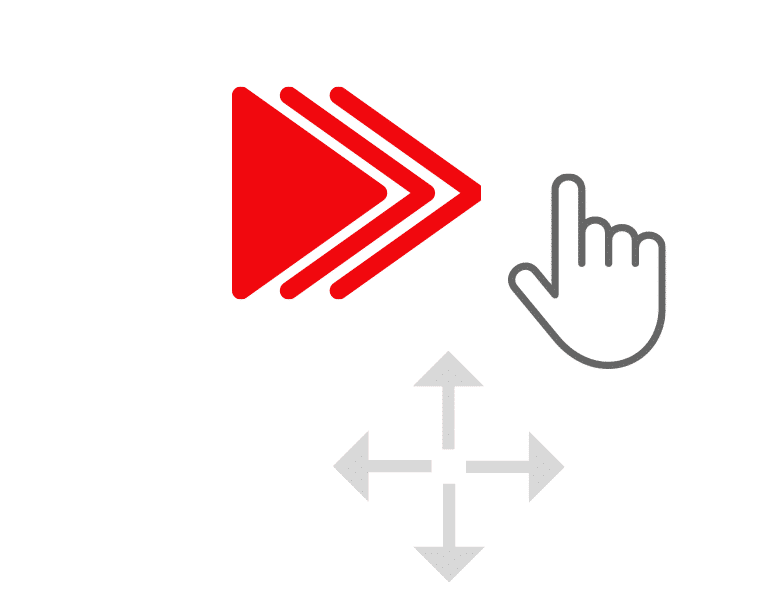PPC B2B lead generation is a commonly used and powerful strategy for reaching potential customers and driving growth. Its effectiveness depends on a deep understanding of the right B2B marketing metrics. Knowing which PPC performance indicators to monitor can transform campaign data into actionable insights and significantly enhance your overall PPC B2B lead generation strategy for driving high-quality leads. Let’s explore the critical metrics every B2B leader should consider to optimize their PPC B2B lead generation campaigns.
The Complexity of PPC B2B Lead Generation
PPC B2B lead generation is a dynamic and challenging process driven by the unique nature of business-to-business transactions. Unlike B2C marketing, where the journey from awareness to purchase is often swift, B2B sales cycle optimization involves navigating a more intricate path with multiple decision-makers. The stakes are higher, and the decision-making process is more deliberate, requiring a more nuanced approach to PPC lead generation strategies.
Several factors contribute to this complexity, shaping how B2B marketers must design and execute their PPC strategies:
- Extended Sales Cycles: B2B transactions often require nurturing over extended periods, involving multiple touchpoints across various stages of the B2B sales cycle optimization.
- Multiple Stakeholders: Decisions typically involve several stakeholders, each with unique concerns and priorities, necessitating tailored messaging for different roles.
- High-Value Transactions: B2B deals often have high stakes, requiring rigorous scrutiny and sophisticated targeting to ensure the leads generated are of the highest quality.
Given these complexities, a strategic approach is crucial for maximizing the effectiveness of PPC B2B lead generation campaigns. By focusing on key areas, businesses can navigate the challenges of B2B lead generation and achieve greater success:
- Data-Driven Decision Making: Leveraging data analytics to segment audiences and personalize marketing efforts can offer a competitive edge.
- Content Marketing: Providing valuable content that addresses specific needs helps establish authority and attracts qualified leads.
- Relationship Building: Consistent follow-ups and personalized communication enhance lead quality and improve B2B conversion rates.
Evaluating Lead Quality in PPC Campaigns
In PPC lead generation campaigns, generating a high volume of leads is only half the battle—what truly matters is the lead quality assessment. After all, not all leads are created equal. High-quality leads are the ones most likely to convert into paying customers, offering a stronger return on investment (PPC campaign ROI) and maximizing the impact of your marketing efforts.
Marketers should focus on the key metrics for assessing lead quality to determine which leads hold the greatest potential. These campaign metrics provide a clearer picture of which prospects are most aligned with your business goals and most likely to generate value.
- Conversion Rates: Measure the percentage of leads that take a desired action, such as filling out a form or requesting a demo. High B2B conversion rates indicate strong campaign performance and a good correlation between keyword phrases, audience, landing page experience, and potential buyer interest.
- Cost Per Lead (CPL): While lower CPLs are desirable, they must be balanced with lead quality assessment. A low CPL might signal an influx of low-quality leads, whereas a higher CPL could justify more promising prospects that are worth the investment.
- Lead Scoring: Assigning values to leads based on attributes and behaviors (e.g., company size, engagement level) helps prioritize those B2B leads most aligned with your ideal customer profile. This information can then be used to further optimize and fine-tune your PPC B2B lead generation campaigns to be more targeted and thereby more efficient.
- Engagement Metrics: Analyzing how leads interact with your content and website offers insights into their level of interest and readiness to engage further.
- Sales Qualification: B2B marketing teams and agencies need to collaborate closely with sales teams to ensure leads meet the criteria of an ideal customer profile, streamlining the transition from marketing-qualified leads (MQL) to sales-qualified leads (SQL).
By focusing on these metrics, marketers can distinguish between merely curious leads and those with a genuine intent to convert, ensuring that PPC B2B lead generation campaigns deliver the best possible results.
B2B Cost Per Lead (CPL) and Customer Acquisition Cost (CAC)
In B2B marketing, Cost Per Lead (CPL) and Customer Acquisition Cost (CAC) serve as crucial indicators of campaign efficiency and financial performance. These metrics help B2B businesses gauge how effectively their marketing dollars are being used to acquire new B2B leads and customers. When monitored closely, CPL and CAC provide valuable insights that inform smarter budget allocation, ensuring that PPC B2B lead generation efforts contribute directly to growth.
The significance of CPL extends beyond simple cost management; it is a guiding metric for optimizing the entire marketing strategy. Regularly tracking CPL allows businesses to understand which campaigns are delivering leads most economically, enabling smarter resource allocation. However, a low cost per lead isn’t always an indicator of success, as it can sometimes signal the presence of low-quality leads. A nuanced approach—balancing CPL with the quality of B2B leads generated—ensures that B2B marketing efforts are both efficient and effective.
Complementing CPL, CAC provides insights into how effectively a business is turning leads into paying customers. This metric captures the full scope of acquisition costs, offering a comprehensive view of the return on marketing investment. Lowering CAC is crucial for boosting profitability, especially when aligned with broader growth objectives. Additionally, comparing CAC with the Customer Lifetime Value (CLTV) helps businesses determine if their acquisition strategies are delivering enough long-term value to justify the initial costs, promoting more efficient resource allocation and sustained success.
Conversion Rate Optimization for B2B PPC Lead Generation
In B2B PPC lead generation campaigns, Conversion Rate Optimization (CRO) is a critical tactic for turning clicks into tangible results. CRO involves fine-tuning various elements of your campaigns and landing pages to enhance the likelihood that visitors will complete a desired action, such as filling out a form, downloading a whitepaper, or requesting a consultation. By focusing on improving B2B conversion rates, marketers can increase the efficiency of their PPC spend, driving more qualified leads and ultimately boosting sales and revenue.
To boost conversion rates, B2B marketers should focus on several key strategies that streamline the customer journey and enhance engagement:
- Craft High-Impact Ad Copy: Address B2B pain points like cost savings or efficiency improvements, and use industry-specific language that resonates with decision-makers to boost click-through rates.
- Optimize Landing Page: Align landing pages with ad messaging and focus on business needs. Use clear headlines and value propositions, and include resources like whitepapers or case studies that appeal to professional buyers.
- Enhance Form Efficiency: Keep forms short and request only essential B2B information, such as name, company, title, and business email, to simplify the completion process while gathering key lead qualification data.
- Use Social Proof: Include testimonials and case studies from recognized companies in your target industry. Highlight specific business outcomes to build credibility with potential B2B clients.
- Leverage Analytics: Use analytics to track B2B user behavior on landing pages, identifying where visitors drop off. Refine CTAs, content, and layout based on these insights to better meet business needs.
- Implement Personalization: Personalize content based on visitor industry, company size, or role, ensuring that messaging and calls to action are relevant and appealing to specific business segments.
Revenue Attribution and ROI Tracking
Accurate revenue attribution and ROI tracking are essential for understanding which B2B PPC marketing efforts truly drive revenue. Unlike B2C sales, B2B campaigns involve longer cycles and multiple touchpoints, making determining which activities contribute most to closing deals challenging. To make informed decisions and optimize budgets, marketers need to understand the impact of each touchpoint along the buyer’s journey.
However, several challenges complicate this process. Long sales cycles delay revenue recognition, making it difficult to tie specific actions to outcomes. Multiple decision-makers add complexity, as their various interactions across channels must be tracked accurately. Additionally, integrating data from different marketing platforms and CRM systems can be technically challenging but is crucial for a comprehensive view of the customer journey.
To overcome these hurdles, B2B companies should centralize their data within a robust CRM system, regularly refine their attribution models, and ensure strong collaboration between marketing and sales teams. These best practices help capture the true impact of marketing efforts, leading to smarter resource allocation and improved ROI.
Bullseye Strategy’s Expertise in PPC B2B Lead Generation
At Bullseye Strategy, we know that effective PPC campaigns are key to driving quality leads and maximizing ROI in the B2B space. Our tailored, data-driven approach focuses on optimizing every element of your campaigns to align with your business goals and deliver measurable results. Contact us today for a consultation if you’re ready to enhance your PPC strategy and achieve better lead-generation outcomes.
Questions People Also Ask About PPC B2B Lead Generation
What are the key metrics for measuring PPC success in B2B?
Key metrics include Conversion Rate (percentage of visitors taking desired actions resulting in an MQL and SQL), Cost Per Lead (CPL), Customer Acquisition Cost (CAC), and Return on Investment (ROI). These metrics help evaluate campaign cost-effectiveness, profitability, and lead quality.
How do you evaluate lead quality in PPC campaigns?
Evaluate lead quality by analyzing Conversion Rates, Cost Per Lead (CPL), and using Lead Scoring to prioritize leads based on demographics and engagement. Track Engagement Metrics like time on site and pages visited to gauge interest.
How can PPC campaigns improve B2B conversion rates?
Craft compelling ad copy, optimize landing pages, simplify forms, use social proof, and personalize content to match audience needs to improve conversion rates.
What metrics indicate the effectiveness of a B2B PPC lead generation campaign?
Effectiveness is indicated by Click-Through Rate (CTR), Conversion Rate, CPL, CAC, ROI, and Quality Score from ad platforms, reflecting ad relevance and performance.
How does customer acquisition cost (CAC) impact a B2B PPC strategy?
CAC impacts profitability; a lower CAC improves margins, while a higher CAC suggests a need for strategy adjustment to ensure sustainable marketing efforts.
How do you track ROI in B2B PPC campaigns?
Track ROI by comparing revenue from PPC efforts against total costs, using CRM and analytics tools to attribute revenue to specific campaigns accurately.
How do marketing-qualified leads (MQL) and sales-qualified leads (SQL) differ in PPC?
MQLs show initial interest through marketing content, while SQLs are vetted by sales as ready for engagement. PPC targets MQLs with awareness campaigns and SQLs with intent-driven ads.















